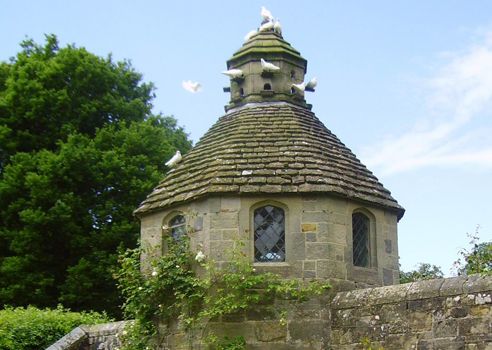Reading time: Less than 1 minute
Increase your vocabulary and you’ll make your writing much more precise. That’s why I provide a word of the week. Today’s word: dovecote….
When I read the word dovecote in John LeCarré’s memoir Pigeon Tunnel, I had no idea how appropriate it was. Here is how he used the word:
It therefore caused something of a flurry in official dovecotes when I was obliged to confess to my department in London that for the better part of a couple of weeks I had been in daily contact with a senior member of the Soviet Embassy in Bonn.
From context, I understood the word to mean “messages.” But when I took the trouble to look it up, I discovered a dovecote was actually a structure to house pigeons or doves. The one shown in the photo at the top of this post is in Nymans Gardens, West Sussex, England. Dovecotes may be free-standing structures in a variety of shapes, or built into the end of a house or barn. They generally contain pigeonholes for the birds to nest.
The etymology of the word is straightfoward. Dove comes from the early Middle English douve, probably from Old English dufe–, from Proto-Germanic dubon, perhaps related to words for “dive” — thought to be a reference to the birds’ flight. Cote is Old English for “a hut, a little house,” the same root word that gives us cottage.
The word is particularly appropriate in the case of this book because it goes by the name the Pigeon Tunnel.
An earlier version of this post first appeared on my blog on Dec. 12/18.


